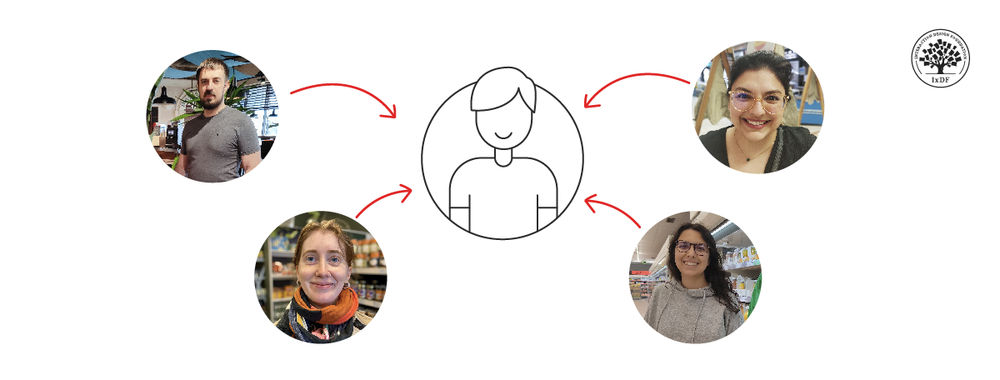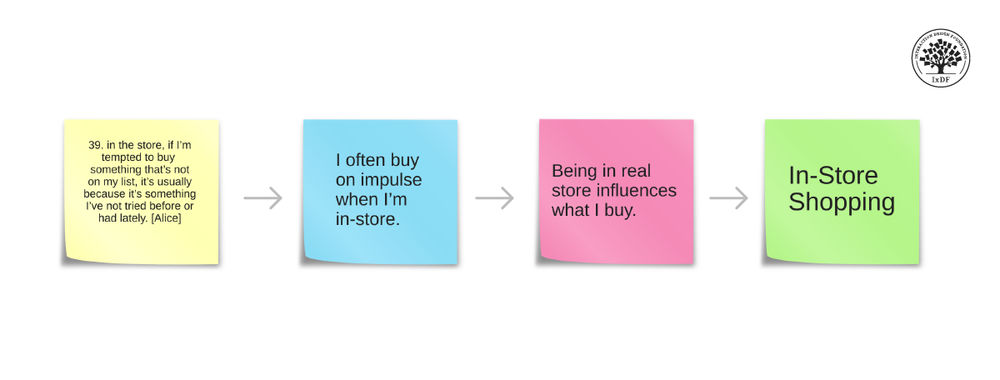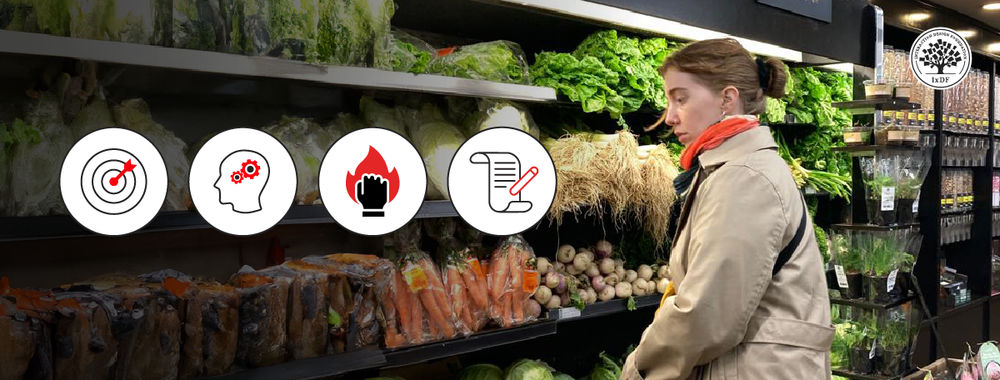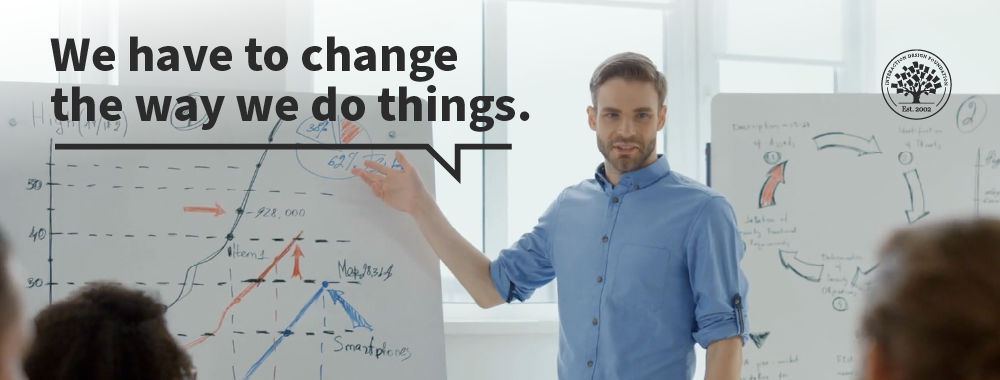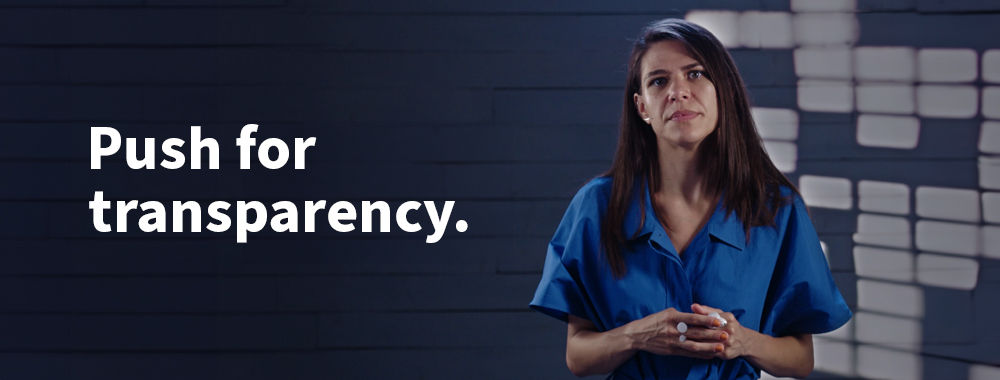Networking is a strategy that every freelancer and entrepreneur should be implementing to win business and use for professional development. One of the best and easiest ways to market your new business is through networking. Networks can consist of people you know, or they can comprise strangers. However, both kinds of network can offer very effective (and low-cost) ways to connect with new clients. Networking is all about the human touch. If you see it as nothing but a marketing opportunity, it won’t bring many results. Instead, focus on creating interaction, demonstrating your expertise and a genuine interest in other people. At the same time, you want to make networking viable for your business, so you need to approach it carefully and with an end result in mind.
This article will teach you how to get the best professional results by turning networking into sales as well as getting great personal experiences through networking. You’ll learn how to approach your personal and professional network best – both online and offline.
Your Personal Network – Direct Marketing
Before you send a note to everyone you know on a social network explaining that you’re a freelancer or entrepreneur looking for work, you’ll want to take a little step back and ask yourself whether that’s the right approach.
In general, the best social network to market for work on is LinkedIn. LinkedIn is a professional contacts network; it’s a place where business takes place. You can market to your network on Facebook, too, but the design of the network is less business-focused, and you may find yourself alienating people if you start marketing to your Facebook network.
Phase 1 – Preparing
However, before you send a note out to people on LinkedIn or reach for the phone to start calling your Rolodex list of contacts, consider doing a few things first:
Make sure your website is fully polished and you’re representing your best work and your marketing story. There’s no point in generating leads and then having them land on a half-finished, ill-conceived website, is there? No one likes getting on an escalator to nowhere.
Update your LinkedIn profile. Write your personal statement and include keyphrases and keywords related to your business. Make sure you’ve asked some of the people you’ve worked with in the past for references (LinkedIn makes this very easy).
Is there anyone else whom you can add to your network? Now is a good time to reach out to all those people you’ve been in contact with throughout your professional life. Go through that stack of business cards you have lying around and invite people to connect on LinkedIn.
Set up your company page on LinkedIn and claim your custom LinkedIn URL. Make it easy for others to find you. Consider setting up your company page on Facebook (again with a custom URL), too.
 Author/Copyright holder: David Bruce Jr. Copyright terms and licence: CC BY 2.0.
Author/Copyright holder: David Bruce Jr. Copyright terms and licence: CC BY 2.0.
It doesn’t take long to set up your LinkedIn profile page, and it’s a vital step in networking with your contacts.
Phase 2 – Review and Adjust Your Contact List
Next, it’s time to review your contact list. Some of those contacts are going to be people you know well and get along with, but others not so much.
The people you know well and get along with are likely to be the most helpful, if approached in the right way, although people from the other list may surprise you, too. Don’t write anyone off at this juncture.
Then ask yourself an important question. “What do I want from this person?” It’s unlikely that every person on your contacts list is a buyer of services like yours. You’ll want to tailor your contacts to the people you send them to. In fact, you may want to send out a variety of contact letters/mails/calls, etc. to people you know. Include:
-
A simple announcement of your services, asking someone to get in touch if he/she has any needs for services such as yours. This would go to people who buy (or have a highly influential role in buying) services just like yours.
-
A request for connection to someone in their network. If you examine people’s profiles in your network, you may be able to spot important connections of theirs – buyers who are just outside of your network to whom a contact might be able to introduce you.
-
A request for the person to let others know about your business and to recommend you—where practical—to other contacts. In this case, you can’t see any direct connection to a buyer, but it’s always worth asking for a little publicity.
Phase 3 – Start Networking
The next step is to send (or make calls) to customized contacts to achieve those objectives. Don’t write a form letter and copy/paste it. That may save you some time, but people aren’t likely to want to feel like a number on your list—they’ll be unlikely to help if you treat them that way. Rack your brains... recall some personal details, and reconnect as part of the process.
The objective of networking is not to bleed your contacts dry for sales but to develop relationships which help create exposure, recommendations and—eventually—sales.
Be prepared for some people to say “no”. That’s their right, and you should never hassle someone who doesn’t want to help. Send him or her a thank-you note anyway for replying… you never know—he or she may just have been having a bad day, and a polite response may get you a better response at a later date. So, let people give you a second chance before you try pushing a second or third chance on them.
Be prepared to be ignored. Again, don’t hassle these folks. Maybe, they’re busy? Maybe, they’re just not in the right place? Maybe, they’re too shy to say; “no”? Whatever it is… respect their right to ignore you.
Be prepared for some people to ask for some quid pro quo, too – that’s fair. If you want help from others, you have to be ready to give some help yourself.
Once you’ve established who is/isn’t helpful in your network, focus your efforts on encouraging the helpful folks, but don’t be pushy and don’t be spammy. Sometimes, networking efforts are rapidly successful, sometimes they take time. Don’t force the process. Make your words make you liked.
 Author/Copyright holder: Victorgrigas. Copyright terms and licence: CC BY-SA 2.0
Author/Copyright holder: Victorgrigas. Copyright terms and licence: CC BY-SA 2.0
Networking events can be big or small. What you get out of them very much depends on what you put into them. Concentrate on forming quality relationships, not on meeting large quantities of people.
Online Networking – LinkedIn Groups, Professional Forums, etc.
One great way to network is to join professional groups online, including those on LinkedIn. It’s important to focus on groups where potential buyers of services hang out. Still, there’s nothing wrong with joining groups for support from fellow professionals in a similar position, but don’t expect to win much business in those groups.
When you join these groups, your job is to be helpful and useful. It is not to spam the forum with adverts for your services. What you are looking to do is to attract clients by demonstrating your expertise and not to alienate them with “buy from me” pleas or shoves.
Establish yourself as a useful and valuable member of the group and request to connect with other group members where you’ve had significant interactions. This will help you get them to read your LinkedIn profile, ask direct questions which may be transformed into sales, etc.
There is a limit to the number of groups that you can join on LinkedIn, so if you find you’ve joined a group with only a few active participants or waves of spam, leave it—go elsewhere.
-
You have another way to create leads through online networking—start your own LinkedIn group. This is pretty easy to do. Create a nice profile for the group – clearly stating the value of joining. Prepare a few useful posts inside the group, ask people in your network to join (as a favour) and then invite buyers of your services to join, too. This has one big advantage over other types of networking groups; you’re in control.
You can keep your competitors at bay while creating genuinely meaningful relationships with clients.
Offline Networking – Networking Groups to Trade Shows and Conferences
Not all networking needs to be done online. In fact, face-to-face networking can bring about incredible results for business owners – when it’s done right.
Sources of Offline Networking Possibilities
Where do you find offline networking opportunities? Try some of these places to find leads:
Your professional body’s (e.g., the professional association that represents people who do what you do’s) website – they will hold conferences, trade shows or at least be involved with those that do.
Your local Chamber of Commerce (or if you’re overseas, your embassy’s Business/Trade group) – local networking events through these channels may or may not require membership of the group; so, you should weigh this cost up against the potential business to be gained.
Meetup – Interaction Design Foundation’s Local Groups offers a wide range of local meetings aimed at creative professionals. Here you'll find both potential clients and peers. If there is no IxDF Local Group in your city or area, you should consider initiating it yourself as this will be a great way to meet potential clients, peers, and to establish your name in your area. You can join your Local Group here: https://www.interaction-design.org/community.
Google – you can always search for trade fairs, networking meetings, etc., too.

Interaction Design Foundation’s local groups are a really useful source of networking. If there’s no local group in your area, why not start one?
A Golden Rule in All Professional Networking for Upcoming Businesses
Don’t forget, as with all networking, you will want to spend time where your clients hang out. While networking with like-minded professionals can be great for professional and personal development, it’s normally not a great way to do marketing (unless you’re looking for partners to tackle a larger project).
It’s a very common mistake for new freelancers and entrepreneurs to spend far too much time with other start-ups at conferences and meetings. It’s fun, and it’s great to be part of a community and meet up with peers who are going through the same learning processes, but it is also very time-consuming, and if you don’t have enough clients on your books, you should strongly reconsider if the timing is right to hang out with peers. Instead, make sure to focus on participating in meetups and conferences where you have a chance of meeting potential clients. In the near future, once your business is up and running, you will get more time to interact with, have fun with and to learn from your peers.
How to Approach Offline Networking
Professional networking can be a nerve-wracking experience if you’ve never done it before. You turn up in a room full of hundreds of people, none of whom you know. What do you do?
Prepare
Before you go to the networking event, ensure that:
You’re dressed appropriately. A chamber of commerce event is likely to require a suit. A meetup event may well be much more casual (look at where it’s held to get a clue, or send a message to the organizer and ask if you’re not sure). If in doubt, always turn up in the most professional dress, it’s always better to be over-dressed (which can start pleasant conversations, anyway) than under-dressed (where everyone goes out of his or her way to ignore you).
You’re comfortable with your elevator pitch which is a 1–5 minute bull’s eye explanation of your core services and value proposition. The best practice is to rehearse both a one-minute and a five-minute version of your pitch so you’re able to keep it short and sweet when required and then go into depth with an extended version if you sense a real interest from a potential client. Most often, you shouldn’t deliver your pitch in one go as a presentation. Instead, once you know your elevator pitch by heart and without hesitation, you’ll realize just how easy it becomes to converse about your services and the value that your services bring to your clients. Also, having warmed up, you’ll be really prepared to present your elevator pitch in case anyone asks you to pitch them – it’s rare, but it does happen.
Always remember to trust yourself and the quality of your business and product; otherwise, no one else will. The successful American investor and entrepreneur, Lori Greiner, sums it up: “people don't like when you're not confident about what you're pitching, and they don't want to invest in you or get behind you.” There’s no difference between trying to get investment capital or to pitch your new business services to a potential client at a networking event. You have to believe in earnest that your product can make a difference. You have to believe that your product is worth buying and can add value to your client. If you don’t believe in the quality and value of your product, no one else will. On the other hand, if you do know that you can add value to potential clients’ businesses, then it won’t be difficult to develop your elevator pitch.
“If you do not believe in your product or service enough to offer it to your own family and friends, then you should question the value of what you are selling.”
― Zig Ziglar, Secrets of Closing the Sale, American author, salesman, and motivational speaker
You have a handful of business cards which are up-to-date with your e-mail, mobile number, website, etc.
You have copies of any other hard-copy marketing material that you use with clients (if you use this kind of marketing material – don’t worry if you don’t).
You know when it starts and that you turn up on time or five minutes early (some events will start late – but there’s no need to make a bad impression on the organizers or anyone who does turn up on time).
How to Turn Networking into a Sale – Focus on Quality of Connections, not Quantity
Every time you go to a networking meeting, you’ll find one lunatic working the room as though shaking enough hands might save their lives. They’ll normally say “Hi!” and tell you a line or two about themselves and then hand you a business card as they rush onto the next person. Do you know how much business those folks typically get from networking?
None—people don’t go to networking events to collect business cards. They go to network.
Introduce yourself to someone who looks interesting. Take time to get to know that individual. Ask what problems he or she is facing. What do they do? Find out about people. Build a relationship, and don’t focus on selling your services at all, yet do feel free to share what you do and if there’s something you might help with. When you know your elevator pitch by heart, you’ll be able to include your core services and value proposition in any given conversation whenever you feel that you can help potential clients solve some of their problems. Then give them a business card and get theirs. This way helping others can turn into a real sale, and both you and your new client will be content.
At a typical 2–3 hour networking event, you may only make 2–3 connections like this, but they will be meaningful connections.
Once the event is over, follow up—send the person an e-mail; remind him/her of what you were talking about, and offer any further advice/insight on the topic. Then explain what you do. Ask these people whether you may add them on LinkedIn.
Then, over time, build a meaningful relationship with those contacts. It’s a slower process than handing out hundreds of business cards but a much more fruitful method.
Think About Speaking at Networking Events
Many networking events have time slots for people to give talks/presentations. Speaking can be a great way to get a lot of leads out of an event. There are some basic rules for these kinds of speeches, too:
Focus on your marketing story while showing how your services can solve problems for your customers. Use a case study. Don’t deliver an advert; deliver useful, valuable information – tailored to your audience.
Give away helpful advice. Don’t hide the important stuff. If someone is going to do whatever it is you do themselves, they are going to do that, anyway. Ideas are worthless without execution. No one can simply steal your ideas, so don’t think of spies in the audience, hungry to do you down. Ideas are not state secrets; they take time and hard work to execute. However, by educating your audience, you demonstrate expertise which gives those, who are going to outsource, confidence in your abilities.
Ensure that you leave time for audience interaction. If the time slot is 30 minutes, speak for 20 and keep 10 for questions. Most of the value in presentations comes from the Q&A sessions at the end.
Try and keep things light-hearted and uptempo. These sessions can become tedious if you don’t.
If you give a speech, always make yourself available afterwards. People may have questions they didn’t want to ask in front of others. Make sure you have plenty of business cards to hand – if people like what they hear, they may want to follow up later, too.
 Author/Copyright holder: Greg Edwards. Copyright terms and licence: CC BY-SA 3.0
Author/Copyright holder: Greg Edwards. Copyright terms and licence: CC BY-SA 3.0
Presenting can be a great way to connect with a much larger audience. Make sure you’re well prepared, though – you want to wow your audience when you present.
The Take Away
Networking is all about the human touch. If you see it as nothing but a marketing opportunity, it won’t bring many results. Instead focus on creating interaction, demonstrating your expertise and a genuine interest in other people.
If you’re really making an effort, your network may quickly bring you business but for most freelancers and entrepreneurs, networking is a little slower. It’s faster than many other forms of marketing (particularly SEO and Direct Mail) but not lightning fast.
However, there is one big benefit of networking for start-ups; it gets you human interaction with many freelancers and entrepreneurs. But don’t spend all your time networking with other start-ups at conferences and meetings. It’s fun, and it’s great to be part of a community and meet up with peers who are going through the same learning processes, but it is also very time-consuming and if you don’t have enough clients in your book, you should strongly reconsider if the timing is right to hang out with peers. Instead, be sure to focus on participating in meetups and conferences where you have a chance of meeting potential clients.
Networking is a strategy that every start-up should be implementing to win business and for professional development.
One last piece of advice on networking from Guy Kawasaki, the American Marketing Executive:
“The mark of a good conversationalist is not that you can talk a lot. The mark is that you can get others to talk a lot. Thus, good schmoozer’s are good listeners, not good talkers.”
– Guy Kawasaki
References & Where to Learn More
Hero Image: Author/Copyright holder: Think London. Copyright terms and licence: CC BY 2.0
Join the best local networking groups right here: IxDF Community
Dale Carnegie, How to Win Friends and Influence People, 2012
Michael J. Maher, 7L: The Seven Levels of Communication: Go From Relationships to Referrals, 2016
Judy Robinett, How to Be a Power Connector: The 5+50+100 Rule for Turning Your Business Network into Profits, 2014
Zig Ziglar, Secrets of Closing the Sale, 2004
More about Guy Kawasaki here.
More about business networking: Business networking tips and techniques for networking events and networking websites



